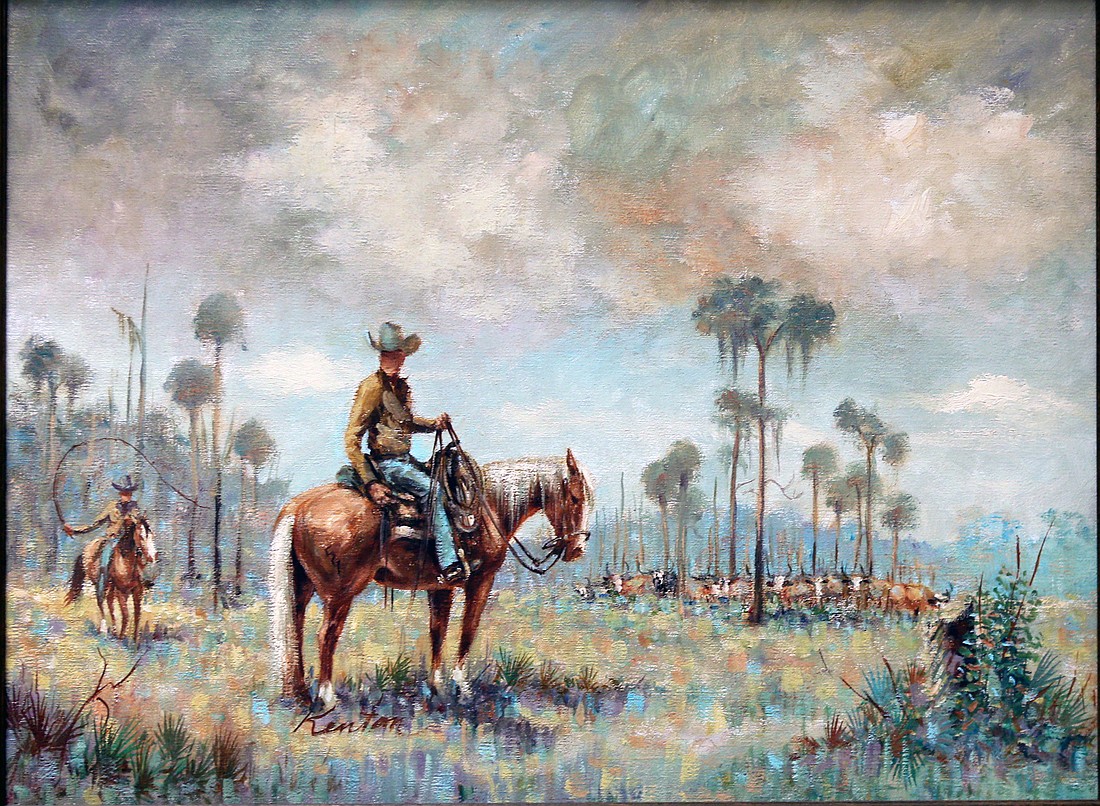- April 12, 2025
-
-
Loading

Loading

Albin Polasek Museum & Sculpture Gardens Board of Trustees Emeritus Mark Terry still can picture it in his mind — a stand of virgin pine, where the tops of the trees spread into a crown shape, like some type of outdoor cathedral. Dappled light shines through the branches above, and time stops.
The place Terry’s mind goes back to is the ranch on which he grew up in southeast Orange County.
“If you’ve been raised on a ranch or a farm or in a rural atmosphere, there’s something of it that never leaves you,” Terry said.
An exhibit on display at the Albin Polasek Museum & Sculpture Gardens is capturing that feeling that sticks some people like a spur, telling the story of Florida’s cattle culture in the most authentic way possible: through the eyes and artwork of real cattlemen and cattlewomen.
“Lay of the Land: The Art of Florida’s Cattle Culture” — on display through April 14 — features art and objects that capture the essence of the state’s 500-year-old cattle industry.
Visitors that view the exhibit — which features 18 artists — will see everything from ranch objects and tools such as saddles, whips and spurs to fine art in the form of paintings, sculptures and photography.
Objects and art on loan come from members of the Cowboy Artist Association of Florida, cowboy craftsmen from around the state, private collections and the Seminole Tribe.
It’s an exhibit that’s been several years in the making and was driven and inspired by Terry, who wanted there to be an exhibit that captured that cattle lifestyle and industry from his youth.
“There really is a love of both the flora and fauna that exists on the land,” he said.
Terry worked closely with Museum Curator Rachel Frisby to find artists in ranches across the state.
A key figure who made the exhibit possible was artist and cattleman Sean Sexton, who has deep connections with the Florida Cattlemen’s Association and the Cowboy Artist Association of Florida and helped the museum locate artists.
Frisby, Sexton and artist and folklorist Bob Stone traveled across the Sunshine State last year to meet men and women in the cattle industry and see their artwork.
Frisby and Sexton then curated all the work into the exhibit that resides in the Polasek Museum today.
“(These) are things that have never been on display by people who have never had anything in a museum before,” Sexton said. “The art itself is this way of life. The practitioners are all engaged deeply in animal agriculture and pastoralism.
“I hope that (visitors) are surprised by the whole thing all together, to see it as a continuous whole representation of creativity associated with their industry,” he said. “I just think it will knock ’em down to see that all of this has gone on. These people — myself included — have figured out how to keep an art alive within the constraints of their work lives.”
Terry said if there’s something that he hopes visitors take away from the exhibit, it’s that “Lay of the Land” isn’t capturing an old-fashioned lifestyle from history books. Rather, it’s a living, breathing culture that still exists today.
“That world is still there, and it matters, and it’s something that we should cherish and protect,” Terry said.